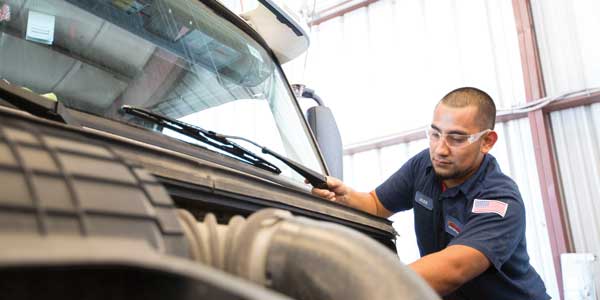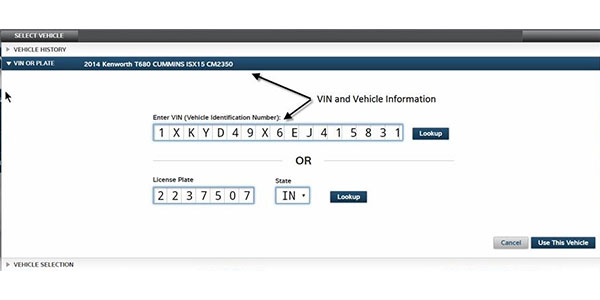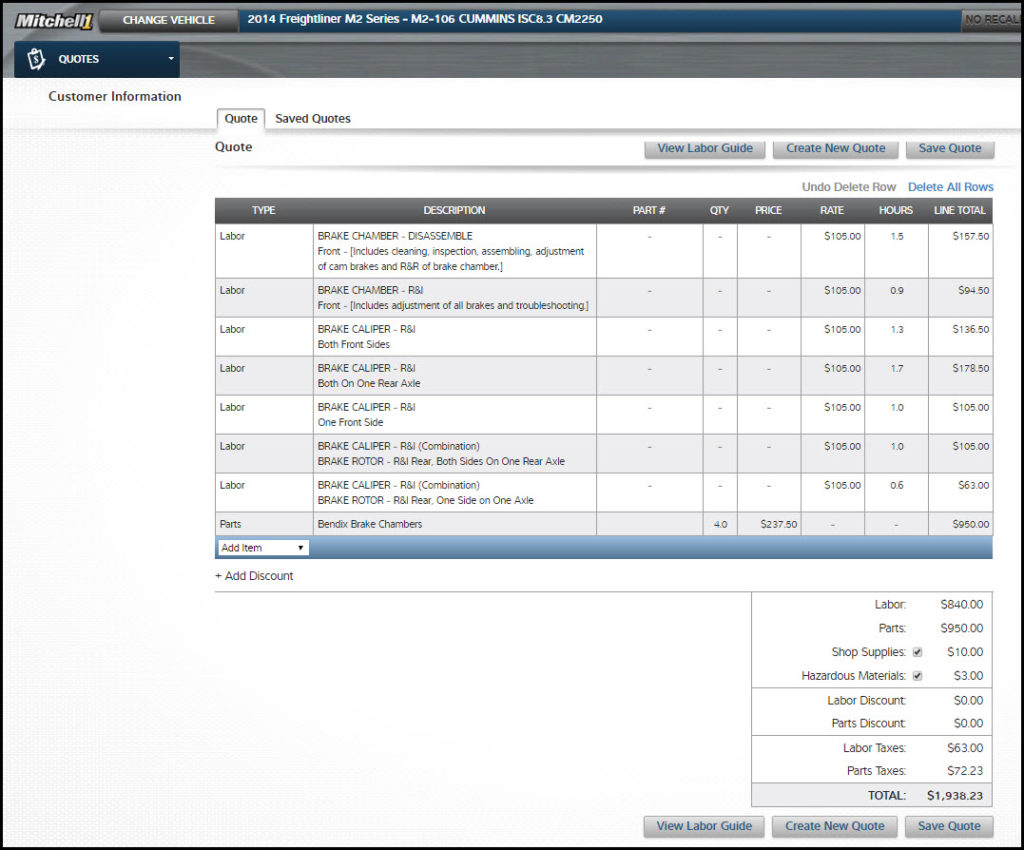
For heavy-duty repair shops, the name of the game is efficiency. Your goal is to identify the issues with the trucks that come in and fix them, and you want to do this as quickly and efficiently as possible. You want to keep customers happy by getting their trucks back out on the road making money, which also means you can free up a bay to get more business rolling into your shop.
To properly identify root causes and the proper repair procedures, you need the right tools. For this reason, efficiency is at the heart of the design of TruckSeries by Mitchell 1, a web-based source of repair information for medium- and heavy-duty trucks.
We’ll look at how TruckSeries helps increase productivity and saves time and money for everyone involved in the repair process: the technician, the shop manager or owner, and the customer.
1. The technician
Since TruckSeries is geared toward helping technicians repair trucks, the technicians will, naturally, see direct benefits from using it.
Everything in TruckSeries runs through the 1SearchPlus search engine and user interface. Technicians first select a vehicle—there is the option to search by plate number or VIN, or to fill in the truck’s information step by step, including make, model and other relevant equipment details. From there, he or she can search by fault code, by the symptom that the truck is expressing, or by the component that is having the issue.

TruckSeries, as you can see in the image above, presents a user-friendly card layout showing the most relevant information for the repair in question is presented—specifications, testing procedures, wiring diagrams, connector views, component locations; whatever the technician needs to complete the repair.
For the independent shop, which deals with a constantly rotating array of truck makes and models, the fact that all makes and models are all presented in the same format on TruckSeries can be a huge time saver. No longer do your technicians have to learn how to navigate 8 to 10 different manufacturer websites and learn how the information is presented on each other. Now, they only have to learn one website—and an intuitive, easy-to-follow one at that. It may seem like a small benefit on the surface, but all that time adds up to allow the technician to immediately get started on what he or she is there to do: fixing trucks.
And speaking of fixing trucks, a misdiagnosis of a truck’s root issue can be catastrophic. When this happens, the subsequent repair might be unnecessary or even counterproductive. The truck likely has to return to the shop very soon, and an unhappy customer is coming back with it.
This exact scenario is one thing that TruckSeries is designed to avoid. TruckSeries’ database of web-based repair information can be easily accessed and helps eliminate guesswork from the diagnosis through the completed repair procedure.
This is especially important as today’s trucks incorporate more new technology and grow increasingly complex. Many seasoned technicians, while extremely knowledgeable about the mechanical side of things, may not be as familiar in dealing with electronics or digital parts, and so may appreciate the colorful, scalable wiring diagrams provided through TruckSeries.
Younger or newer techs, meanwhile, may not have done a particular repair before, and often rely on online guides to help them through it. Oftentimes this takes the form of searching for walkthroughs online, which can be useful but can just as easily come from unreliable sources. Using TruckSeries’ repair guides, which are built on years of technician data and information, provides techs with a reliable step-by-step walkthrough of the repair procedure—without the uncertainty and risk that comes with an indiscriminate online search.
2. The shop manager/owner
Another advantage of Mitchell 1 software is its capability for integration. TruckSeries integrates with Mitchell 1’s heavy-duty shop management system, Manager SE Truck Edition, allowing the entire shop to be run through Mitchell 1 software. This enables easy uploading of detailed information, such as the vehicle specs and repair history, to be imported over from TruckSeries when doing something like preparing a customer invoice. The shop manager can view a variety of business reports and metrics to be sure that the shop is running efficiently, while saving time on some of those smaller things, like unnecessary data re-entry.
Additionally, access to complete repair information for all these different makes and models helps identify scenarios in which the shop doesn’t have the relevant skills or equipment needed to fix a particular service issue. This simplifies and accelerates the decision to potentially outsource the job to a dealer or specialty service location. This is an important, but sometimes overlooked, benefit that can help the shop avoid wasting time on testing and trying one part or procedure after another only to find that the problem requires skills or equipment presently unavailable.
Looking to connect already? Click here to get in touch with Mitchell 1.
3. The customer
When a fleet or owner/operator drops off a truck at a repair shop, he or she has two goals: that the problem is fixed correctly, and that it’s fixed in the shortest amount of time possible, avoiding downtime and allowing the truck to get back out on the road, making money. Downtime is the bane of any fleet’s existence, and the repair shop is a frequent source of downtime. Industry sources suggest that the average repair takes three and a half hours, but that the truck is out of commission for four days.
Closing the gap between those two numbers is one of the main goals of the modern repair shop. A fleet owner or manager will remember a shop that got its trucks back on the road with minimal downtime. But if your shop adds unnecessary hours or days of waiting before the truck can get back to its routes, well, they’ll remember you, but not in in the way you’d like.

This is another area in which TruckSeries can help. The commercial truck labor time estimator in TruckSeries verifies the shop is charging for services based off of standard industry labor times developed by Mitchell 1, helping shops to be more profitable by not leaving “money on the table” where labor is concerned. In addition, it sets proper expectations for customers and technicians alike —giving the truck owner a consistent experience job over job, and allowing managers to identify and coach any technicians who are working more slowly than they should.
Additionally, every benefit the technician experiences—the ease of looking up a vehicle and an issue, the ease of navigating TruckSeries as opposed to multiple vehicle manufacturer websites, and the detailed diagrams for repairs—comes back to help the customer as well. If the technician is doing his or her job efficiently, that means that truck is that much closer to getting back onto the road.
After all, time is money—for the shop, for the tech, and for the customer.













